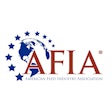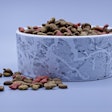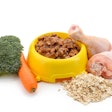Some people within the Association of American Feed Control Officials (AAFCO) have never cared for negative claims on petfood labelsstatements such as, "no ____" or "____free." Although currently there is no model regulation, policy or guideline that explicitly addresses this issue, some regulators believe that even when such statements are technically true, claims regarding absence of an ingredient in a product may cause false disparagement of that safe and acceptable feed ingredient.
Personally, I do not care for negative claims, and for reasons apart from regulatory issues, I think in the long run they do a disservice to the petfood industry. Regardless, at this time most negative claims are generally tolerated by state feed control officials provided they are factual and do not elaborate on the purported rationale for absence of a particular ingredient.
One negative claim that has gained a lot of attention of late is "no by-products." Over the past six months or so at least a few states have been seriously challenging such statements on a number of companies' petfood labels. The basis for objection appears to be that the product label bearing the no by-products claim does in fact contain by-products, causing the claim to be false and misleading.
Not without controversy
AAFCO defines "by-products" pretty broadly: "Secondary products produced in addition to the principal product" (2008 AAFCO Official Publication , p. 240).
This could apply to many AAFCO-defined feed ingredients, yet only a fraction of those incorporate the term into their definitions. Starting about a decade ago, there was considerable discussion between AAFCO and the industry regarding certain ingredients, particularly poultry by-product meal (AAFCO #9.10). The concern was that mandatory use of the term created a competitive disadvantage compared to ingredient names unencumbered by the negative insinuation that by-products has with the consumer. The proposed solution was to eliminate or replace it with a more consumer-friendly term-for example, poultry protein meal.
It is unfortunate that the by-product term creates such a negative perception with the public, as that certainly was not AAFCO's intent. I have long held that properly processed by-products can be perfectly safe and nutritious ingredients. Ideally, companies would help educate consumers about the merits of such ingredients rather than appear elusive-if not embarrassed-about their inclusion in formulations. In my opinion, an attempt to obfuscate the issue by further hiding the nature of an ingredient from the public is not the correct tack.
Whatever one's position on this controversy, no company should take unfair advantage of the situation-claim no by-products when such is not the fact. For many years, the predominant means of validating the veracity of a no by-products claim appeared to be simply to verify the absence of the term in the ingredient declaration. However, at least for some states, that is no longer sufficient. To these regulators, the presence or absence of the term doesn't wholly determine the presence or absence of by-products in the petfood.
Growing interpretation
A growing point of view among regulators is that any rendered meal is, in fact, a by-product. Certainly, it is apparent from AAFCO definitions that an ingredient like meat meal (AAFCO #9.40) likely contains internal organs and other non-meat tissues normally understood to be by-products. On that basis, states question whether it is false and misleading to then implicitly assert that the ingredient is not a by-product when it is similar in composition to something like poultry by-product meal.
In fact, the states contend that poultry meal (AAFCO #9.71), which is comprised solely of flesh, skin and bones (lacks the non-meat tissues normally ascribed to by-products), is still a by-product, since it generally meets the AAFCO definition as a product resulting secondarily from the processing of poultry for human consumption.
As I understand it, rendered animal fats would also fall under the definition of by-products as the states are interpreting it. While perfectly acceptable ingredients for petfood formulations, these fats would likely not exist on the market except for the fact they are an offshoot of the meat and poultry processing industry.
While the focus has been on animal-source ingredients, it's likely that many plant-source ingredients, such as grain fractions (oat hulls, wheat middlings), beet pulp and tomato pomace would also fall under this broad definition. Hence, attempts to qualify the claim-for example, no meat by-products-would likely still be considered misleading by state regulators.
What this means
While only a few states appear to be making this a priority now, I think it is likely to gain sympathy with regulators, and other states may join in. Though the basis for action would be a relatively straightforward case of a false or misleading claim, I would expect the action would reflect an underlying belief that it would also help hinder false disparagement of AAFCO-defined by-products in general. States may also view it as leveling the playing field, diminishing the competitive disadvantage of declaring by-product as part of an AAFCO-defined ingredient name.
Ultimately, companies might not have a choice in the matter. I understand and appreciate the consumer appeal of a no by-products claim from a marketing perspective, but from the scientific viewpoint, it has no real meaning in terms of assuring a safe and nutritious petfood.
So, regardless of state action, I would advise that this negative claim be given a positive spin. For example, instead of no by-products, claims such as, "lamb meal as the only animal-source protein ingredient" or "just chicken and chicken liver" can be used to describe the product.















